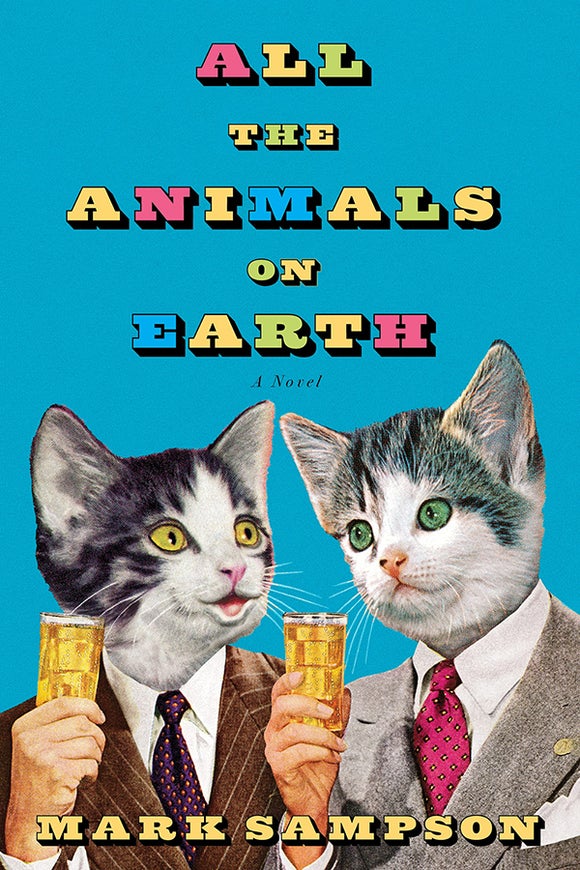By Skylar Kay
All the Animals on Earth
by Mark Sampson
Wolsak and Wynn (2020)
Mark Sampson’s All The Animals On Earth is like if Orwell had mashed Animal
Farm and 1984 into one story. The dystopian government and urbanization works alongside the animal-to-human conversion of the pullulation (a government-initiated project to save humanity) to give this Orwellian effect, while the comedy makes me think of Bojack Horseman at times. The comedy is certainly a nice relief from what otherwise seems an Orwellian nightmare, as it juxtaposes some light against the very dark nature of murders and societal degradation brought about by the pullulation.
The characters are well-rounded, each with detailed pre- pullulation histories and desires. Whether it be a desire to be an actor, teacher, or parent, these characters are all unique in what drives them, as well as their attitudes towards the pullulation and how these new humans (Blomers) act. Hector and Otis, two of the main characters, each become more and more discontent with their work, relationships, and the pullulation as a whole, climaxing in Hector having an animalistic breakdown in a parking lot during which he reveals things about himself that he had previously repressed. The characters’ realization of their animalistic side drives the novel, as Otis’s wife runs away to be a groupie of a Blomer band, and Otis has to leave work behind, something very out of character for him normally, to find her and win her back. Sampson’s clever way of turning the animals more human, and the humans more animalistic allows the reader to see the unrefined, natural instincts not only of Hector, but also of themselves.
The only part of this novel that left me wanting more was the unanswered questions about the pullulation. We see the dogs, birds, even a camel that was turned human by the pullulation, and the novel implies that all these animals had changed—no more dogs, for example. However, there are no mentions of Blomers that had once been bugs, or fish. Did the pullulation impact underwater life? Where are the bugs now? Can these Blomers from different species procreate with one another? The timeframe of the novel covers enough that a baby could have been born, but the reader receives no information about that. These unanswered questions just kind of nagged at me throughout the novel, and while I do not think it takes away from what the story is, it could have been beneficial to add a bit more detail into the sci-fi aspect of the world Sampson made.
Overall, All The Animals On Earth is a fun read that honestly reveals a lot to the reader about the unrefined aspect of humans. It is worth reading if you are looking for a good laugh, or even some fairly serious soft sci-fi.
Skylar Kay is a not-so-new writer who has a passion for Japanese forms, specifically haiku. Her work has appeared in several online and print journals, including Autumn Moon Haiku Journal and Ephemerae.


